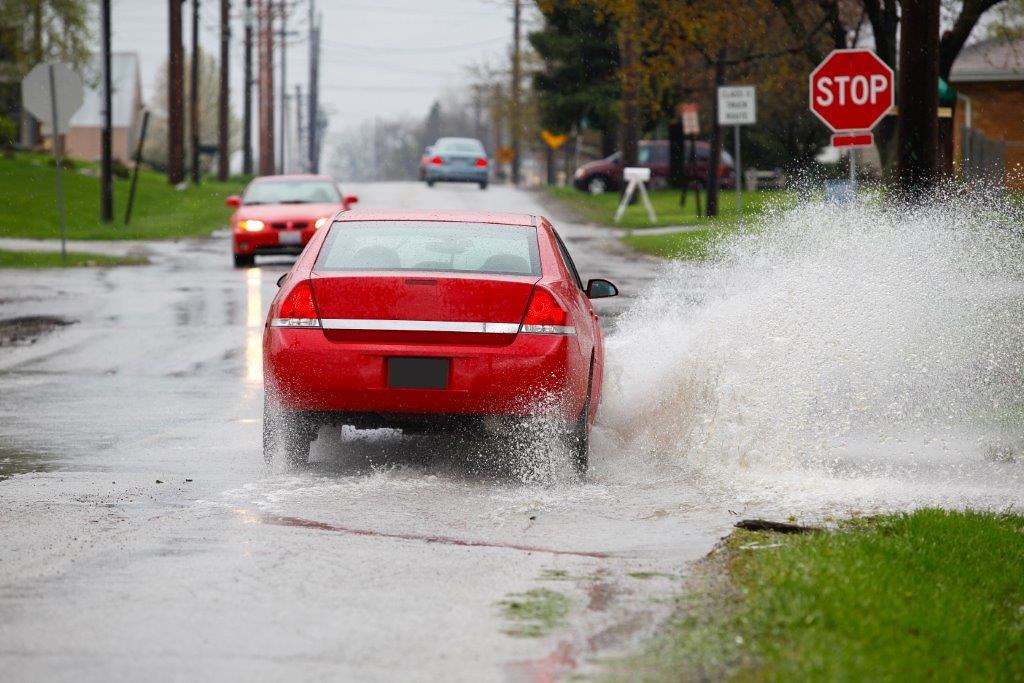The grinding sounds of gears and hard shifts are clear warning signs that your automatic transmission might be in trouble, and that can lead to expensive repairs. These intricate mechanical systems depend on precise engineering and quality fluid to function seamlessly for hundreds of thousands of miles.
However, abuse or neglect can quickly transform your buttery automatic into a gear-jamming nightmare. Save yourself the heartache and huge repair bills by avoiding these crucial mistakes. If you want to keep your automatic transmission purring along happily ever after, read on to discover the top 5 things you should never, ever do.

1. **Don’t Drive Through Deep Water**: Automatic transmissions have a vent located on the exterior housing. This vent serves an important purpose – it allows pressurized transmission fluid to escape and relieve pressure as the fluid expands from heat during normal operation. Driving through deep water, however, can be catastrophic for this vent. As the vehicle moves through standing water, the water can rush into the open vent and contaminate the transmission fluid inside. Unfortunately, automatic transmission fluid and water do not mix well. The water dilutes the fluid and causes it to foam, preventing proper lubrication of internal components. It also introduces corrosion and rust within the transmission case. The end result is often complete transmission failure requiring a full rebuild or replacement. A moment of carelessness driving through flood waters can cost thousands in repairs. So be vigilant about assessing water depth before proceeding, or find an alternate route. The cost of being stranded or towed is trivial compared to a flooded transmission.

2. **Don’t Accidentally Shift From Drive to Reverse While Moving**: It’s easy to unintentionally shift from Drive to Reverse with column shifters that are mounted on the steering column or on the console next to the driver’s seat. The driver’s elbow or knee can inadvertently bump the shifter and knock it into Reverse while the vehicle is moving forward. But floor-mounted shifters located between the front seats on the transmission hump make this error nearly impossible. Shifting to Reverse while the car is moving forward applies tremendous stress and torque on internal components not designed to handle it. The resulting damage can be catastrophic – snapped drive shafts, stripped gears, even cracks in the transmission case itself. This mistake often requires extensive repairs or full transmission replacement. Teenage drivers learning to drive manual shifters are prone to this error, accidentally knocking the shifter backwards into Reverse from Drive. Many have ended up with totaled cars from a simple distracted shifting mistake. Remember to be conscious of your shifter location and position to avoid this very costly error.

3. **Don’t Leave The Car Idling In Drive For Extended Periods**: It’s common to leave a car idling when stopped for a short time, for example waiting to pick someone up. But extended idling in Drive causes excess heat buildup within the transmission. The pump continues circulating fluid even while stopped, and the torque converter remains engaged with the engine spinning. So leaving the car in Drive forces transmission components to rotate constantly while not moving. This constant motion and friction generates internal heat, especially in very hot weather. Excessive idling while in gear can lead to overheating and eventual transmission failure as fluid breaks down and lubrication is compromised. Instead shift into Park when stopped for longer periods of time. This disengages the torque converter and relieves pressure on internal components. Idling in Park allows proper cooling and reduces stress on the transmission.

4. **Don’t Do Burnouts**: Burnouts may look cool, but they place a lot of strain on drivetrain components. When doing a burnout, the tires break traction with the pavement and spin freely while the output shaft continues applying torque. This puts severe stress on the gears and shafts not designed to operate at such extreme opposing forces. Automatic transmissions in particular suffer greatly during burnouts. The abrupt changes in torque and wheel speeds generate tremendous heat and vibration within the transmission. Even occasional burnouts can damage internal components like bands, clutches, planetary gears, and bearings leading to premature wear and eventual failure. Manual transmissions can withstand the abuse of burnouts better by slipping the clutch to reduce drivetrain shock loading. But automatics have no such protection. Replacing a badly damaged automatic transmission can easily cost several thousand dollars. So avoid temptation and keep your burnout desires in check to preserve your transmission.

5. **Don’t Neglect Transmission Fluid Changes**: Many newer vehicles tout “lifetime fluid” that never needs changing. This seems like a maintenance bonus but actually causes transmissions to fail prematurely as old fluid degrades. Automatic transmission fluid is a precisely engineered formula designed for specific friction coefficients, thermal capacity, and viscosity. But over time and miles the fluid breaks down and loses its protective qualities. Dirty fluid leads to internal wear, overheating, and eventual transmission failure. Mileage-based fluid changes every 60-80k miles ensures fresh fluid maintains proper lubrication and cooling. Although modern synthetic formulations last longer than old type F and type A fluids, they still require periodic changing. Do not simply trust a manufacturer’s often overly-optimistic service intervals. Instead stick to the tried and true rule of changing transmission fluid every 60-80k miles for optimal longevity, especially on vehicles used for towing or frequent highway driving. Regular $100 fluid changes are far cheaper than a $4000 transmission rebuild when neglected fluid fails.

In the realm of automatic transmissions, a lack of knowledge can lead to costly consequences; by being aware of and steering clear of these five common mistakes, you can save a fortune on repairs while keeping your vehicle running smoothly for years to come. Remember, maintaining your transmission’s health is crucial for an enjoyable ride, so take these insights to heart and watch your vehicle thrive.

6. **Avoid Slipping Gears**: One of the most disheartening moments for any driver is when their car unexpectedly slips out of gear, indicating a struggle to maintain the crucial connection between the engine and wheels. This slipping issue can stem from low fluid levels, worn clutches, or malfunctioning sensors, which may lead to overheating and severe wear on the transmission, resulting in expensive repairs. To avert such problems, make it a habit to regularly check your fluid levels and adhere to a scheduled maintenance routine. Staying proactive can help prevent that alarming loss of power while you’re on the road.

7. **Keep an Eye on Transmission Temperature**: Just like any intricate machine, your automatic transmission operates best within a specific temperature range, and exceeding this limit can lead to catastrophic damage, including burnt fluid and gear slipping. Many vehicles are equipped with a transmission temperature gauge, so if your car has one, be sure to monitor it closely. If you notice the temperature rising too high, find a safe spot to pull over and let your transmission cool down. Routine maintenance, including fluid changes, is essential to ensure your transmission stays within its ideal temperature range, enabling it to function effectively.

8. **Watch for Unusual Noises**: If your transmission is making strange sounds, it’s a red flag that something is amiss. Whining, clunking, or grinding noises can indicate internal damage or low fluid levels. Ignoring these sounds can lead to a complete transmission failure, resulting in expensive repairs. If you notice any unusual noises, it’s best to have your vehicle inspected by a professional as soon as possible. Early detection can often prevent a minor issue from escalating into a costly repair.

9. **Adopt Proper Driving Techniques**: Your driving style plays a significant role in the longevity of your transmission. For instance, sudden acceleration or harsh braking can place undue stress on transmission components, while smoother acceleration and gradual braking can make a world of difference. Additionally, when towing, ensure that you don’t exceed your vehicle’s towing capacity, as overloads can strain the transmission excessively. By practicing good driving habits, you not only enhance your vehicle’s performance but also contribute to extending the lifespan of your transmission.

10. **Know Your Towing Capacity**: Overloading your vehicle can be detrimental to your transmission’s health. Every vehicle has a specified towing capacity, and exceeding this limit puts tremendous strain on the transmission. This can result in overheating, slipping, and ultimately, transmission failure. Always refer to your vehicle’s owner manual or consult with the manufacturer to understand the limits of your vehicle. Ensuring that you stay within recommended limits will help maintain the integrity of your transmission over time.

11. **Avoid Quick Shifts After Cold Starts**: When starting your vehicle on a cold morning, it’s important to allow the transmission to warm up before driving aggressively. Cold transmission fluid is thicker and doesn’t flow as smoothly, leading to potential damage if subjected to high-stress conditions. Allow your vehicle to idle for a minute or two, giving the transmission time to circulate the fluid properly. This simple step can significantly reduce wear and prolong the life of your transmission.

12. **Regularly Check and Change Filters**: Much like engine oil, transmission fluid can accumulate contaminants that compromise its effectiveness. A clogged transmission filter can inhibit fluid flow, leading to overheating and potential failure. It’s vital to conduct regular inspections and replace the transmission filter as necessary. Depending on your vehicle and driving conditions, aim to change the filter every 30,000 to 50,000 miles. Keeping your transmission fluid clean is key to ensuring optimal performance and durability.

13. **Pay Attention to Warning Lights**: Modern vehicles are equipped with various sensors that alert drivers to potential issues, including problems with the transmission. If your dashboard shows a transmission warning light, don’t ignore it. Prompt attention to these alerts can save you from extensive damage down the line. Always consult with a qualified technician to diagnose and address any warning lights promptly.

14. **Educate Yourself on Transmission Types**: Understanding the differences between your vehicle’s transmission type can help you make informed decisions regarding maintenance and driving techniques. Automatic transmissions operate differently than manual ones, and each requires distinct care. Familiarize yourself with the characteristics of your transmission type to better appreciate its needs and potential pitfalls. Knowledge is power, and being proactive can keep your transmission running smoothly.

15. **Consider Professional Maintenance Services**: Sometimes, the best way to ensure your transmission remains in good health is to enlist the help of professionals. A qualified mechanic can provide in-depth inspections and maintenance that the average car owner might overlook. From fluid changes to advanced diagnostics, a professional service can identify issues before they become major problems. Investing in regular professional maintenance can save you significant amounts in repair costs over the life of your vehicle.

By following these tips, you can keep your automatic transmission strong and dependable for years to come. Remember, a little preventative maintenance goes a long way in avoiding expensive repairs, so enjoy your time on the road with the peace of mind that your transmission is in great shape!
Related posts:
Top 5 Automatic Transmission Blunders That Could Cost You: If You Want It to Last
Top 5 Most Expensive Truck Transmission Repair Mistakes: How To Avoid Them?
The Top 4 Reasons for Transmission Failure





